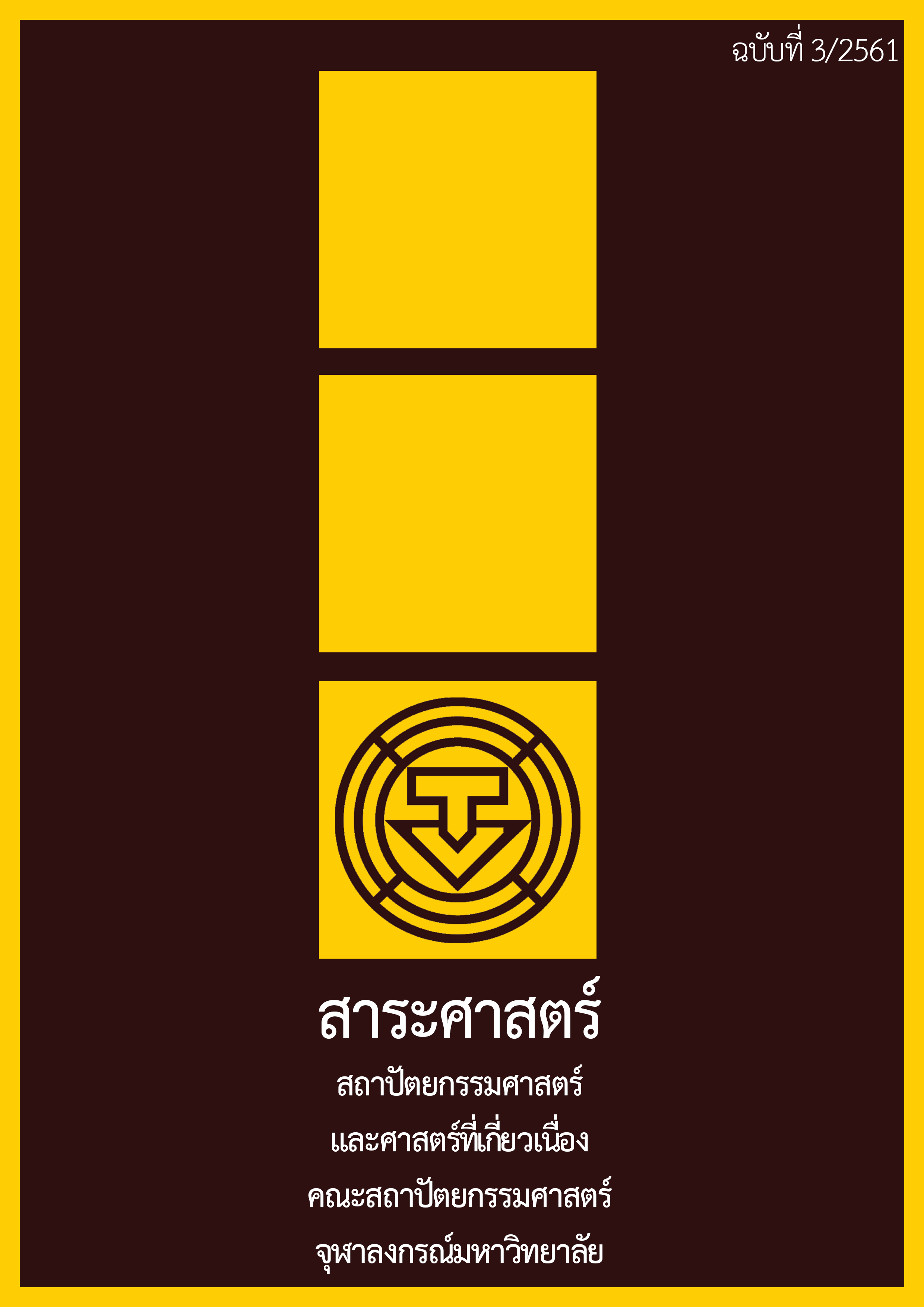บทบาทของสวนบ้านและแหล่งอาหารชุมชน ต่อระบบอาหารครัวเรือน กรณีศึกษา บ้านโนนสะอาด จังหวัดขอนแก่น
Main Article Content
บทคัดย่อ
จากการศึกษาบทบาทของสวนบ้านและแหล่งอาหารชุมชนในพื้นที่บ้านโนนสะอาด จังหวัดขอนแก่น พบว่าชาวบ้านยังคงพึ่งพาประโยชน์จากผลลิตส่วนหนึ่งที่ได้จากแหล่งผลิตอาหารดังกล่าวเพื่อการบริโภค จากการเก็บข้อมูลแหล่งผลิตอาหารในครัวเรือน พบว่าอาหารส่วนใหญ่ที่ได้จากสวนบ้านเป็นอาหารประเภทพืชผัก และผลไม้ โดยพืชที่สามารถพบได้จากทุกครัวเรือนที่ทำการสำรวจ ได้แก่ มะละกอ มะนาว ข่า ตะไคร้ กล้วย และตำลึง อาหารที่ได้จากแหล่งอาหารชุมชน ได้แก่ เห็ดป่า และหน่อไม้ป่า ตามแต่ฤดูกาล ในส่วนของอาหารที่สวนบ้านและแหล่งอาหารชุมชนไม่สามารถผลิตได้ หรือไม่สามารถผลิตได้เพียงพอต่อความต้องการ ได้แก่ เครื่องปรุงรส อาหารจำพวกแป้ง และเนื้อสัตว์บางชนิด เช่น ข้าวที่เป็นผลผลิตจากทุ่งนา เนื้อหมูที่ต้องซื้อจากพ่อค้าในหมู่บ้าน หรือจากตลาดมัญจาคีรี เป็นต้น
ประโยชน์ที่มนุษย์ได้รับจากสวนบ้านและแหล่งอาหารชุมชน นอกจากอาหารแล้ว ประการแรก ประโยชน์ด้านสังคมอันเกิดจากผลผลิตส่วนเกิน ชาวบ้านจะนำไปแบ่งปัน หรือแลกเปลี่ยนกับเพื่อนบ้าน การเป็นพื้นที่นันทนาการเพื่อการพบปะพูดคุย เป็นต้น ประการที่สอง ประโยชน์ด้านวัฒนธรรม จากการเป็นพื้นที่ถ่ายทอดองค์ความรู้ด้านวัฒนธรรมอาหาร ภูมิปัญญาในการหาอาหารจากแหล่งอาหารชุมชน และความเชื่อท้องถิ่น ประการที่สาม ประโยชน์ด้านเศรษฐศาสตร์ เนื่องจากการเก็บผลผลิตจากแหล่งผลิตอาหารดังกล่าว สามารถช่วยลดค่าใช้จ่ายแก่ครัวเรือนในการซื้ออาหาร และวัสดุ ทั้งยังมีรายได้จากการขายผลผลิต เป็นการช่วยส่งเสริมระบบเศรษฐกิจครัวเรือน และชุมชน และประการสุดท้าย ประโยชน์ด้านระบบนิเวศ เช่น การเป็นแหล่งอาศัย และแหล่งอาหารของสัตว์ในพื้นที่ใกล้เคียง พื้นที่รองรับระบบย่อยสลายตามธรรมชาติ พื้นที่ซึมซับน้ำผิวดิน เป็นต้น ซึ่งประโยชน์ที่มนุษย์ได้จากสวนบ้านและแหล่งอาหารชุมชนเหล่านี้ เรียกอีกอย่างหนึ่งว่า นิเวศบริการ (Ecosystem Services)
Article Details
เอกสารอ้างอิง
Fernandest, E.C.M. and Nair, P.K.R. "An Evaluation of the Structure and Function of Tropical Homegardens." Agricultural Systems 21(1986) : 279-310.
Forman, R. T. T. and Godron, M. Landscape Ecology. Hoboken, NJ.: John Wiley & Sons, 1986.
Growing Food Connections. "Community Food Systems Planning." Accessed June 19, 2018. https://growingfoodconnections.org/about/community-food-systems-planning/.
Hayao, Fukui. Food and Population in a Northeast Thai Village. Hawai: University of Hawai Press, 1993.
Irena, K., et al. Nourishing Communities From Fractured Food Systems to Transformative Pathways. Cham: Springer, 2017.
Kehlenbeck, K., et al. "Plant Diversity in homegardens in a Socio-Economic and Agro-Ecological Context." Stability of Tropical Rainforest Margins (2007): 295-317.
Koike, et al. "Tohoku Tai Don Daeng Mura : Seikatsu Kodo Kirohu (1) (Don Daeng Village in Northeast Thailand : Daily Activity Survey." Tonan Ajia Kenkyu (Southeast Asian Studies) 23, 3 (1985): 335-348.
Kumar, B. M. and Nair, P. K. R. Tropical Homegardens A Time-Tested Example of Sustainable Agroforestry. Dordrecht: Springer, 2004.
Reid, W. V., et al. Ecosystem and Human Well-Being. Washington, D.C.: Island Press, 2005.
Vos, C.C. and Opdam, P. Landscape Ecology of a Stressed Environment. Dordrecht: Springer Science+Business Media, 2004.
ฉัตรทิพย์ นาถสุภา. เศรษฐกิจหมู่บ้านไทยในอดีต. กรุงเทพมหานคร: สำนักพิมพ์สร้างสรรค์, 2540.
ดนัย ทายตะคุ. "โครงสร้างเชเงปริภูมิของภูมิทัศน์ กับ การวิเคราะห์และการสร้างแบบจำลอง : การทบทวนทฤษฎีของกระบวนการเชิงปริมาณ ทางภูมินิเวศวิทยา." วารสารวิชาการคณะสถาปัตยกรรมศาสตร์ ฉบับงานบริการวิชาการสู่สังคม ภาควิชาภูมิสถาปัตยกรรม 1, 2548: 97-124.
ธนากร ลัทธิ์ถีระสุวรรณ. "คุณสมบัติของดินและความหลากหลายของพืชในสวนหลังบ้าน อำเภอสอง จังหวัดแพร่." วารสารวนศาสตร์ 31, 2 (25550: 16-28.
ธนากร ลัทธิ์ถีระสุวรรณ. "สมบัติดินในสวนหลังบ้านบนพื้นที่สูง ภาคเหนือประเทศไทย : กรณีศึกษาในพื้นที่ จังหวัดเชียงใหม่ และจังหวัดแพร่." วารสารมหาวิทยาลัยนครพนม 1, 2 (2558): 30-40.
บุญเลี้ยง ยันตา. สัมภาษณ์โดยผู้เขียน. 21 เมษายน 2561.
ลำไพ ศรีเร. สัมภาษณ์โดยผู้เขียน. 21 เมษายน 2561.
โสภา พิมพ์ดีด. สัมภาษณ์โดยผู้เขียน. 20 เมษายน 2561.
อุทุมพร หลอดโค. อาหารธรรมชาติ : วิถีการดำรงชีวิตของชุมชนอีสาน. ขอนแก่น: ศูนย์วิจัยพหุลักษณ์สังคมลุ่มน้ำโขง, 2554.


